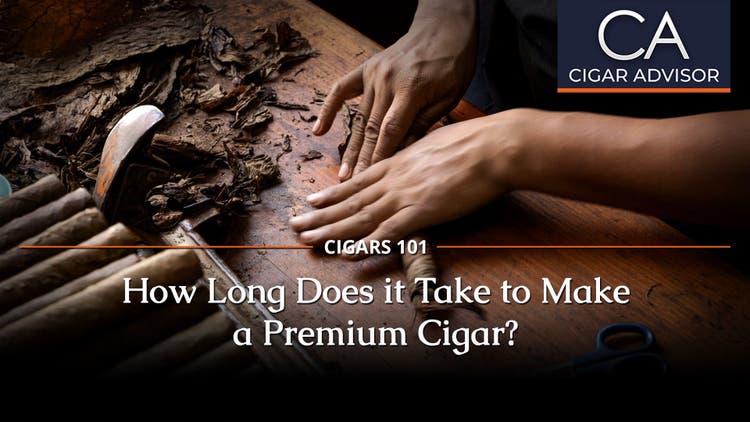
How Long Does it Take to Make a Premium Cigar?
How to Roll Cigars: Tobacco Seed to Cigar Smoke
There’s an old cigar adage that says, “It takes 300 hands to make a cigar.” Blenders, farmers, sorters, fermenters, bunchers, rollers, quality inspectors…far more people in the process than you’d expect. But no one ever counted the actual number of people involved in the cigar making process – so maybe Drew Estate’s Pedro Gomez had it right when he said, “Only God knows.”
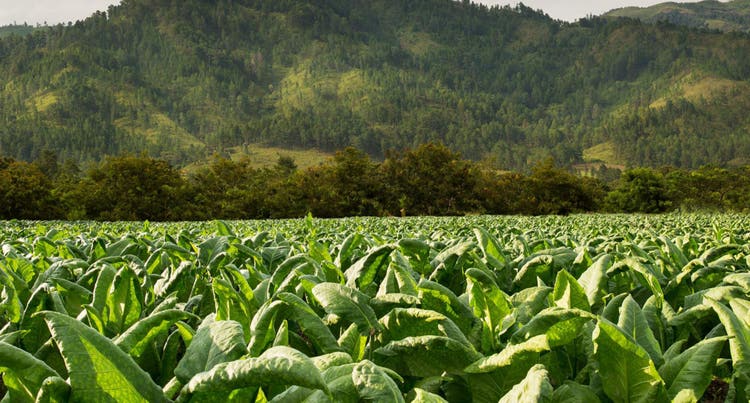
The filler (or “tripa”) is the core of the cigar. Premium cigar fillers consist of a combination of whole tobacco leaves – Seco, Viso, and Ligero – that are placed throughout the entire length of the cigar. These keep the cigar burning, add complexity to a cigar, and reveal the tobaccos’ aromas.
The binder (“banda”) is the leaf rolled around the filler, helping the bunch keep its shape. A good binder complements the flavor of the fillers and wrapper, provides aroma, and functions to keep the cigar burning evenly.
The wrapper (“capa” or “capote”) leaf must be flawless; that’s why it’s the most expensive component of the cigar. It’s also the most flavorful, as this leaf plays an outsized role in the overall strength, character and flavor of the cigar.
Now we’ll walk through the process of how these components all come together, and are skillfully rolled to make a cigar.
How Long Does It Take to Make a Premium Cigar?
Often referred to as “seed to smoke” or “seed to cigar,” it’s the entire process and the total amount of time that ticks away between the moment the tobacco seeds are first planted, to the moment you light up the cigar that was made. As for how long?
It depends.
Premium cigars can be ready to smoke in as quickly as 2 years; but the most accurate answer is, “Only the blender knows.” There are so many variables in cigar making, it could realistically take as long as five years or longer. Most of that time is taken up by fermenting and aging the tobacco; but the patient process begins out in the greenhouse, where a tiny tobacco seed is planted into a starter tray. The seedlings sprout and are watered and tended to for upwards of 10 weeks. Once established, the plants are transplanted to the field – in some cases by hand, in others by a tractor dragging specialized equipment. It takes about another two to three months to grow into a mature plant.
How the Tobacco is Harvested
Like “only God knows” and “it depends,” weather adds an uncertainty to tobacco growing that no calendar can guarantee. But it’s about a full four months from the time the seed is planted to the time the mature leaves are harvested, with adjustments made for the variables.
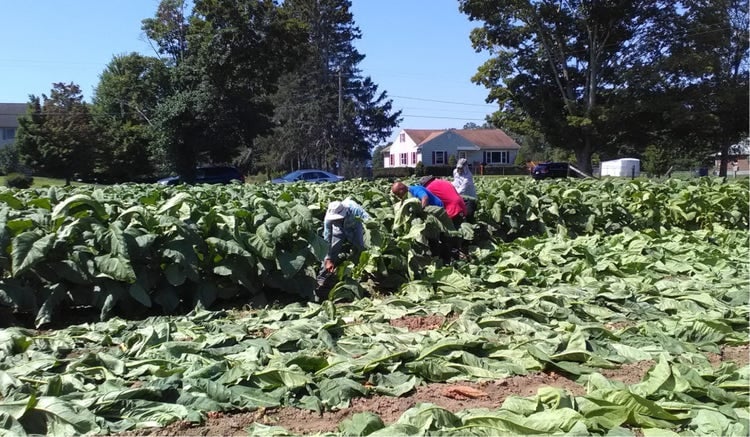
What type of tobacco it is will also factor into time to harvest – stalk cutting waist-high rows of Broadleaf can take a few days, while priming the tall, sun-seeking stems of Connecticut Shade and Cuban seed is spread out over a week.
After the Harvest, the Tobacco is Air Cured
From there the tobacco leaves are sewn or speared onto strips of wood called lathe, which are hung inside a barn to air cure. This leaf wilts, and the chlorophyll breaks down, turning the leaf from that fresh green to a dull yellow and eventually cured brown. This can take anywhere from several weeks to a few months, around 40 to 60 or 65 days, depending on the type of tobacco.
“After we hang the tobaccos,” says Perdomo Cigar CEO, Nick Perdomo, “the most important time period for us are the first 12 to 14 days. That’s the period where the colors are sealed-in as the leaves begin to wilt and start taking on a more yellowish hue.” The humidity inside the barn is controlled through a combination of venting the barn walls and doors, and building small fires (or lighting burners) on the floor. The leaves must dry evenly, and without mold.
Once the leaves have completed their drying period, they’re ready for fermentation. But first they’re classified, weighed, and tied into “hands” of 35 leaves each.
How Tobacco is Fermented for Making Premium Cigars
Fermentation helps to bring out the natural flavors of the tobacco. This can go relatively quickly, where thinner, lighter Connecticut shade leaves only take a few weeks; or in the case of a Maduro, like Broadleaf, it can take several more months. This is the step where the workers build pilones, big piles of thousands of hands of tobacco, which are rotated every few days. And it’s like a big, but carefully controlled compost pile: “We do this because, biochemically, the tobacco processes itself under pressure, while at the same time allows any excess moisture to dissipate,” says Perdomo. The weight of the pile makes pressure on itself, which generates heat; this causes the moisture remaining in the leaf to escape, as well as the harsh ammonia to be released.
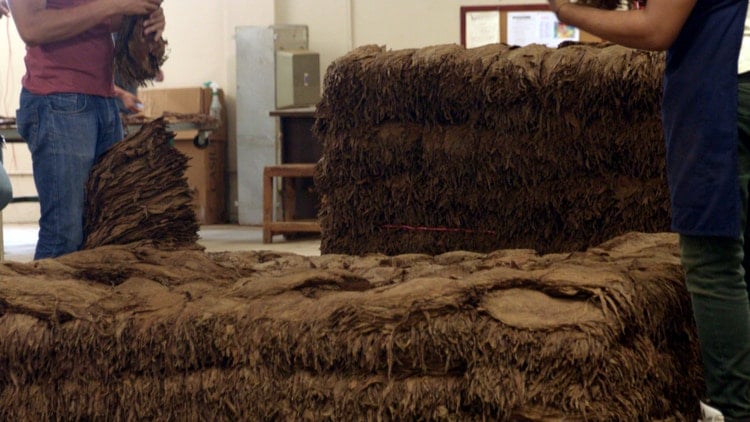
“When a pilon reaches its optimal temperature, we must ‘turn it’ so that it does not overheat,” says Perdomo. Hand by hand, the tobacco is literally shaken to aerate and cool down – and then used to build a new pilon. The top leaves from the first pilon go to the bottom of the new one; the bottom leaves will go to the top, while the center leaves will go out and the outer leaves will go in. “That is called a ‘complete rotation,’ and it’s done this way so all of the tobacco is fermented as uniformly as possible,” says Nick.
If the tobacco requires a second fermentation, the tobacco will be “watered” – where each hand of tobacco is sprayed with a very fine mist of water. The pilon is rebuilt, and the fermentation process starts over.
The Longest Part of Making a Cigar is Aging the Tobacco
Once fermentation is complete, the leaves are taken from the pilones and packed into 200-pound bales. The tobacco will now be left to age inside the bale: the ideal conditions occur with the tobaccos packed in smaller batches, lower humidity, and little to no heat. This environment rounds out the flavor as the leaves mature and can span years. Once aged – and again, this is the longest part of the process, especially if the intention is to use like a really well-aged wrapper leaf, for instance.
Finally Ready to Roll Cigars
After the aging period is complete, the leaves are ready to be rolled into cigars. But – only after they’re processed, where the center vein is stripped out, they’re sorted by size, and weighed.
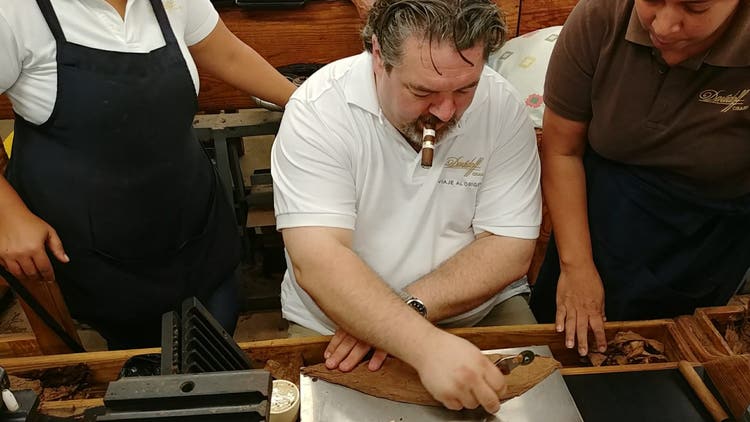
Then it’s on to the buncher and roller. The buncher rolls the filler up in a binder leaf, then places that bunch in a mold for a few hours, before it’s handed to the roller. In contrast to the years that may have led up to this moment, the actual rolling of the cigar is the fastest part of the process. An experienced roller can take the bunch of filler and binder out of the cigar mold, put on a wrapper and apply a cap all in less than a minute. And they’ll make a couple hundred a day.
From Seed, Now to Smoke
Well, almost ready to smoke. The cigars are technically finished, but are aged again. “At this point, the cigar goes into a special room to age. The aging room lets the cigar rest and allows oils to marinate. In some cases, cigars will visit a drying room too to make sure they are at the proper level of humidity,” adds Ernesto Perez-Carrillo. That rest lasts at least 21 days but could stretch for several months or even years to allow the tobacco components to marry, as EPC noted. After that, they pull the cigars out of the aging room, the cigars are inspected, color sorted and boxed or bundled. The companies promote it to tobacco retailers; ship them – and then you finally see the cigars on the humidor shelf.
Add it all up – growing, fermenting, aging, rolling, more aging – it’s usually 2 to 5 years from when the seed goes in the dirt till the cigar is in your hand. And again, all of that “depends” on the tobacco, the desired flavor profile, and the specific production methods employed by the cigar maker.
But it’s so worth the wait.